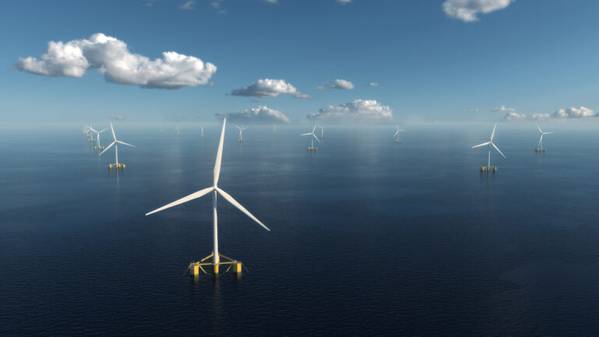
Nora Ventu, a firm formed by Falck Renewables and BlueFloat Energy to develop floating offshore wind farms off the Sardinian coast, has now launched a consultation to provide local communities with more information on two projects to be developed in the Gulf of Cagliari.
Named in homage to Sardinia’s history and ancient culture, Nora Ventu has begun a series of meetings with local stakeholders to outline its proposals for two offshore floating wind farms, Nora Energia 1 in the south-west, and Nora Energia 2 in the south-east, which together would have a total of around 1.4 GW of installed capacity.
This local engagement starts before the beginning of the authorization procedure, the first step of which will be a preliminary consultation process known as scoping, aimed at defining the scope of the environmental impact study, Falck and BlueFloat said Tuesday.
"The company's project proposals build on Falck Renewables' longstanding knowledge of the Italian energy sector and BlueFloat Energy's experience in floating offshore wind technology, which allows wind turbines to be positioned in deep, open sea without the need for fixed foundations. This minimizes the impact on the marine and onshore environment during all phases of the project and allows the wind resource to be harnessed where it is most abundant, increasing the efficiency of the wind farms and contributing to Sardinia's energy requirements," Falck said.
Requests for a maritime concession for each of the two projects were filed with the Ministry of Infrastructure and Sustainable Mobility and the Port System Authority of Cagliari at the end of December 2021.
Local supply chain: 4000 jobs to be created
Falck said that the benefits of the proposed projects for the local economy and supply chain are considerable, with an estimated 4,000 direct jobs being created in the manufacturing, assembly and construction phases. Once operational, the projects are expected to generate more than 300 long-term jobs will be created for maintenance activities, of which around 80% of the workforce will come from the local area, Falck said.
"Goods and services for the construction and maintenance of the floating offshore wind farm will be primarily sourced from local companies, making the most of the local workforce, expanding skills through advanced training schemes and providing significant opportunities for local businesses, during both construction and operation phases," Falck said.
Falck also sad that local infrastructure is also set to benefit as the projects would rely on the main industrial ports, such as the Port of Cagliari, for the assembly, operations, and maintenance of the wind farms, allowing diversification of their infrastructure and services.
As the wind farm projects develop there will be opportunities for study and research and the potential to work in partnership with Sardinian universities, research centers, and technology parks on cutting-edge projects.
"Visual impact analyses already carried out and due to be submitted in the coming weeks, show that the proposed offshore wind farms, which would be located outside the territorial waters, would be almost imperceptible to the human eye from the coast," Falck added.
The Nora Energia 1 project proposal foresees: 53 wind turbines, with a total installed capacity of 795 MW, located in the sea area of the Sardinian Channel southwest of the Gulf of Cagliari, positioned at distances between 22 km (minimum distance from the coast) and 34 km from the coast, and expected annual production of 2.6 TWh, equivalent to the consumption of over 700,000 households, avoiding the emission of around 1,5 million tonnes of CO2 into the atmosphere per year.
The Nora Energia 2 project proposal foresees 40 wind turbines, with a total installed capacity of 600 MW, in the stretch of the sea inside the Sardinian Channel and south-east of the Gulf of Cagliari, located about 30 km south of Capo Carbonara, and expected annual production of 1.9 TWh, equivalent to the consumption of over 500,000 households, avoiding the emission of more than 1 million tonnes of CO2 each year.



